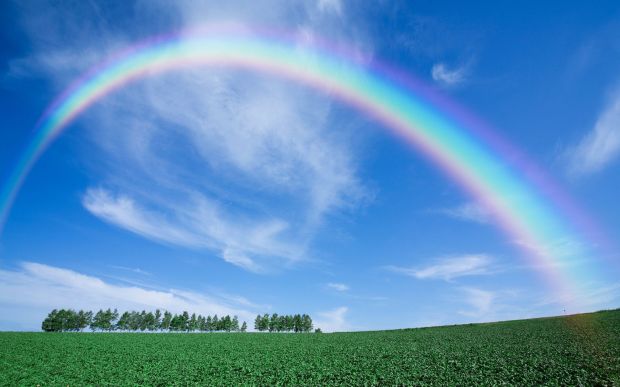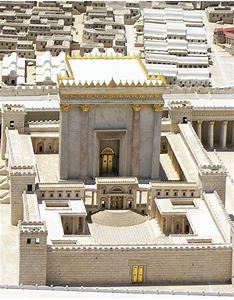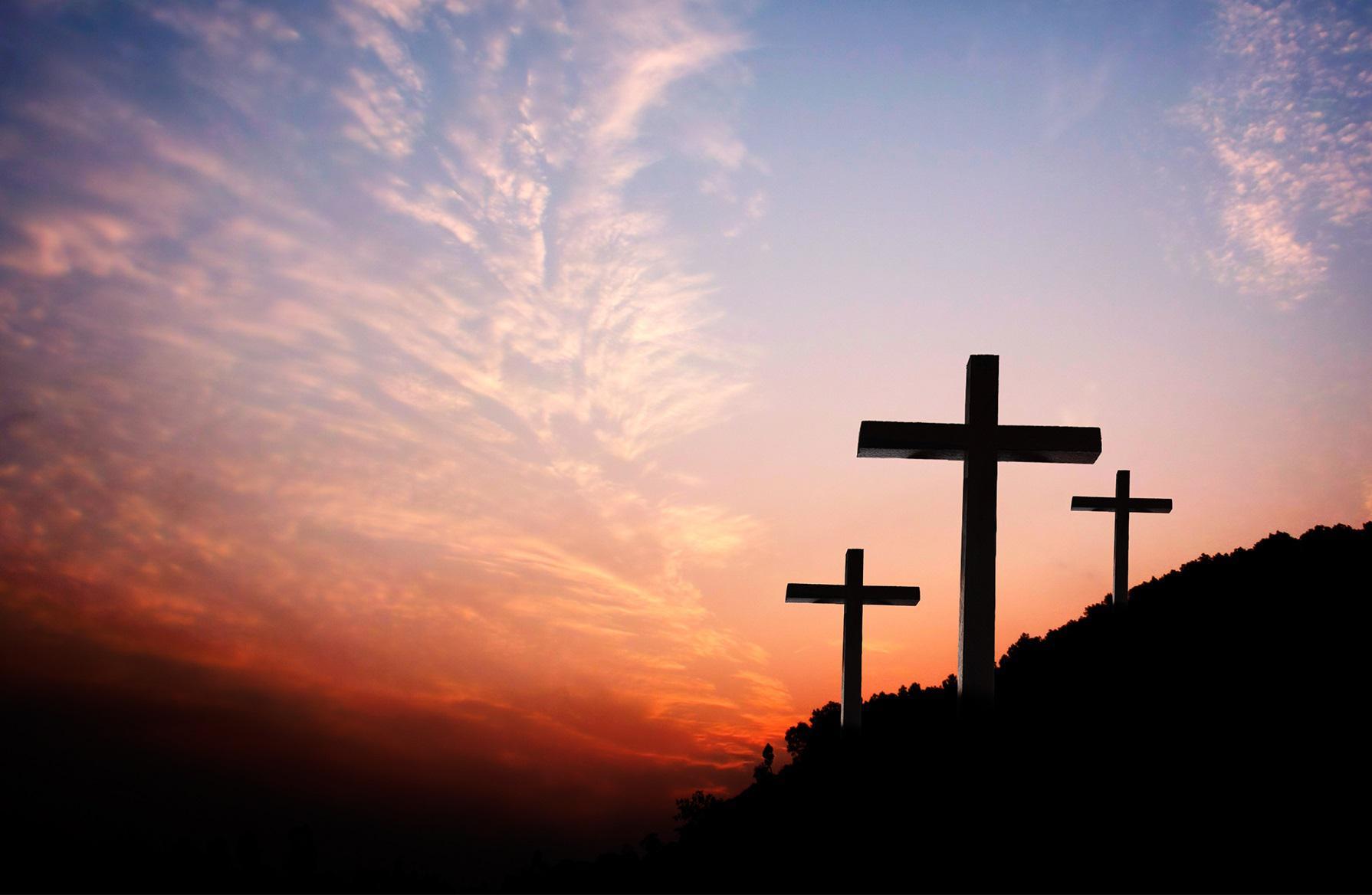
Link to Worship Video for June 7, 2020
Link to announcements video for June 7, 2020
link to ShoeBox Sunday School video for June 7, 2020
This weekend’s worship video begins with a great piece from the Harrow United Church Senior Choir. The rest of the service is titled “From our Ark to Yours”, and features contributions from all of us living in our little ark, waiting for the current floods and storms to subside. Joel Woods did one of the readings, and Naomi tells the Noah story from a children’s bible. Joel and Naomi also offered their version of “Arky Arky”, a song they both sang, and led, often, in Sunday School at church camp. Rev. Lexie Chamberlain and Rev. Darrow Woods both contribute sermons, and Darrow also offers pastoral prayers. The video ends this week with greetings to the Harrow community from a few folks Darrow had virtual coffee with this week.
Scripture Reading:
Noah’s story spans four chapters of the Book of Genesis. Here are excerpts from the paraphrase called The Message.
Noah was a good man, a man of integrity in his community. Noah walked with God. Noah had three sons: Shem, Ham, and Japheth.
The Earth had become a sewer; there was violence everywhere. God took one look and saw how bad it was, everyone corrupt and corrupting—life itself corrupt to the core.
God said to Noah, “It’s all over. It’s the end of the human race. The violence is everywhere; I’m making a clean sweep.
“Build yourself a ship.”
“I’m going to bring a flood on the Earth that will destroy everything alive under Heaven”.
Noah did everything God commanded him to do.
All the underground springs erupted and all the windows of Heaven were thrown open. Rain poured for forty days and forty nights.
Noah and his sons Shem, Ham, and Japheth, accompanied by his wife and his sons’ wives, boarded the ship. And with them every kind of wild and domestic animal, right down to all the kinds of creatures that crawl and all kinds of birds and anything that flies. They came to Noah and to the ship in pairs—everything and anything that had the breath of life in it, male and female of every creature came just as God had commanded Noah. Then God shut the door behind him.
The flood continued forty days and the waters rose and lifted the ship high over the Earth. The waters kept rising, the flood deepened on the Earth, the ship floated on the surface. The flood got worse until all the highest mountains were covered—the high-water mark reached twenty feet above the crest of the mountains. Everything died. Only Noah and his company on the ship lived.
The floodwaters took over for 150 days.
| The ship landed on the Ararat mountain range. The water kept going down until the tenth month. On the first day of the tenth month the tops of the mountains came into view. After forty days Noah opened the window.
He sent out a raven; it flew back and forth waiting for the floodwaters to dry up. Then he sent a dove to check on the flood conditions, but it couldn’t even find a place to perch—water still covered the Earth. Noah reached out and caught it, brought it back into the ship.
He waited seven more days and sent out the dove again. It came back in the evening with a freshly picked olive leaf in its beak. Noah knew that the flood was about finished.
He waited another seven days and sent the dove out a third time. This time it didn’t come back. The flood had dried up. Noah opened the hatch of the ship and saw dry ground.
Noah disembarked with his sons and wife and his sons’ wives. Then all the animals, crawling creatures, birds—every creature on the face of the Earth—left the ship family by family.
Noah built an altar to God. He selected clean animals and birds from every species and offered them as burnt offerings on the altar. God smelled the sweet fragrance and thought to himself, “I’ll never again curse the ground because of people. I know they have this bent toward evil from an early age, but I’ll never again kill off everything living as I’ve just done. |
Then God spoke to Noah and his sons: “I’m setting up my covenant with you including your children who will come after you, along with everything alive around you—birds, farm animals, wild animals—that came out of the ship with you. I’m setting up my covenant with you that never again will everything living be destroyed by floodwaters; no, never again will a flood destroy the Earth.”
“This is the sign of the covenant I am making between me and you and everything living around you and everyone living after you. I’m putting my rainbow in the clouds, a sign of the covenant between me and the Earth.”
May these words be a blessing to us, as we seek to experience the presence of God in each day.
Rev. Lexie’s Learning Time:
When we were expecting our first child, we did many of the things new parents do. We went to prenatal classes, we read the book, “What to expect when you’re expecting.” And we prepared the nursery. We painted the nursery and put a boarder around the room. We went with a Noah’s ark boarder. It had caricature pictures of animals all smiling floating safely inside an ark. We ordered a Noah’s ark crib set. It had a picture of Noah and the animals, all of them looking happy and peaceful. Surely, the not an accurate representation of someone who has been feeling confined in a small space for a long period of time! In the top right corner of the baby quilt was a picture of a dove flying toward the ark with an olive twig in its beak, a rainbow hung in the other corner. This was the age of bumper pads, so of course we tied the pads on to the sides of the crib, wanting to do everything possible to make this a welcoming, loving, safe place for our little one.
I am not sure exactly what prompted us to go with the Noah’s ark theme. Being a clergy couple, it may not surprising that Bible stories carry quite a bit of importance within our lives. We are not Bible thumpers. We don’t go to our churches carrying our Bibles with us. I don’t think we even have any pictures of ourselves holding a Bible. The stories within the Bible run deep within us. They were stories we had learned as children; they were stories that tickled our imaginations. We don’t read them as factual stories of history, but rather we read them as stories which contain a sacred truth. They are stories that invite us to think, to reflect upon life. They were stories we hoped to share with our children.
The Noah’s ark story is a great Bible story. It’s a rise and shine and give God the glory, glory and “Everything is hunky dory, dory” kind of a story. Except for the fact that it’s not.
There is a dark underside to the Noah’s ark story. Noah floating safely on the ark is a wonderful bright and cheery scene. The rest of the world, according to this story, however, would have been flooded, animals and people would have drowned. This is the part of the story we do not teach in Sunday school. This is the part of the story we do not like to shed light upon. But many of our stories have shadowed sides. People drowning in poverty, in hunger, in debt, in alcoholism. Cultures drowning, gasping out for air, for hope, for comfort that a mamma is supposed to bring.
Oh, there is a dark underside to many of our human stories and for a long time, no one wanted to talk about it. We would rather not focus on that part of the story.
Two weeks ago, we caught a glimpse of the dark underside of racism which is prevalent within the American society when police officers held down George Floyd and killed him. This despicable act has helped to point out the racism that runs deep within the American culture. But we would be naive to think that it only exists in the United States. Racism runs deep within our culture as well. Some of you may not want to admit it. Some of you may not want to see it. But if you have talked to any of our black colleagues, if you have listened to our first nations brothers and sisters then you would have heard their stories. Life has not been fair. Workplaces have not been fair. Churches have not been fair.
The fact that this past week, the president of the United States of America stood in front of a Episcopalian church with a Bible in hand for a photo op makes it appear that he knows all too well that some Christians, some churches, will use the ‘word of the Lord’ to support their bigoted, racist thoughts. This president appears to know the Bible has power and authority, but he does not seem to understand the power and authority that it calls its people to! This is the Bible that has prophets speaking to crowds saying you are called to do justice, love mercy and walk humbly with God. This is the Bible that has the stories of Jesus, a leader who walked with migrant fishermen and taught them to share with others. Jesus was the kind of person who reached out to people of different cultures and traditions, the woman at the well, the Syrophoenician woman. He told stories that broke down barriers of race such as the story of the good Samaritan. Jesus was person, who when facing opposition to his words of justice, did not hide. He did not hunker down, or bunker down, but rather he stood with dignity knowing that he was showing a way of love and peace to those who were watching. The Bible is a powerful book. If you read the Bible and only see a Jesus who supports you and your ways, then perhaps you are not seeing the whole picture. Jesus story challenges us and inspires us.
The Bible is an ancient collection of books. It was written by people trying to make sense of their world and where God was active within their world. The story of Noah’s ark is a story of a world in chaos. The ancient story writers understood chaos. They, like us, knew there were bad things that happened within their world. They knew there were times when they needed to change things and start again. The prophets warned communities that things need to change. Sometimes we need to have a fresh start.
That’s what the story of Noah’s ark says to me. It is a story of a fresh start. It is a story that teaches us there are some things that need to be washed away. Things such as injustice, racial profiling, homophobia, arrogance, ignorance, narcissism, greed.
Do I think there was a flood that covered the whole wide world? No. Do I think there was a time when ancient story tellers decided that the world needed to hear a story about a new beginning? Indeed, I do! I think the ancient people needed to hear a story about hope, about how the chaos and negative of the world could be changed…can be changed. Those writers understood the importance of teaching a story of hope……because when the world is a mess, when the world is dark and scary and dangerous, we need to hear stories of hope. Love is the ark that can save us. Justice needs to float high on the tides of change. We need to make this world a safe place for everyone. We need to speak to injustice. We need to stand with and for those who are hurt and hurting. WE need to offer olive branches of hope. When we talk to our children, or our grandchildren, we need to teach them to love and care for everyone. When we look at our school curriculum and Sunday school curriculum we need to see where our biases are being supported. If all the children in the pictures are white, if Jesus is white, it we only tell the Caucasian side of the story, then we are not getting the whole story!
I had such hopes and dreams for our little girl when she was born into the world. Today, our baby is 21, and she teaches me about systemic racism. She, and her younger brother are opening my eyes to ways in which my traditional ways of thinking, need to be challenged and need to change. We cannot protect them from the harsh realities of life. They need to know the whole story, so they can learn and so our society can grow. I can not ignore the whole story. As a parent, as a Christian, I need to learn and grow. Times have changed in this last week….and yet for some families, times have not changed. For black families, for families of colour, for first nations families, some things have not changed. We need to be doing better. We need a new start. Dear Lord, start with me. Amen
Darrow’s Learning Time for June 7, 2020
A man named Noah, who had three sons, was faithful, and respected in his community, lived in a time when the world was going to hell in a hand basket. One translation says the Earth had become a sewer, with violence everywhere. Sounds like things haven’t changed much. The story says God wanted to make a clean sweep, and start over.
Every feel like that? That maybe you have made such a mess of things, that you need a do over? Ever say exactly the wrong thing, and hurt someone, make them very upset, and wish you could hit a button like on a video game, and start again fresh? I was talking to a friend this week who lives in the American mid-west. He and his family are a safe distance from the big protests and scary street scenes, but even so, he expressed deep sorrow, despair for his country, and wondered what it take to make a clean, fresh start.
Ever get into a situation, and say or do something,, and realize it was a huge error, and you never should have gone that way? You might be filled with sorrow, regret, frustration, feelings of helplessness. Even anger. The story suggests God felt this way about the whole world.
This speaks volumes about how God was viewed, in the time this story began to be told. This version of God could be very judgmental, run out of patience- and act rashly. God could look at the whole planet, with all its beauty and complexity and say, “I’m going to scrap it and start again.” This sounds like a little kid having a temper tantrum, pushing away all the blocks because the tower fell down.
I have to tell you I expect more of God than that! I expect God to be ever-loving, ever kind, ever compassionate, to never give up, and always see the potential for good, even when I can’t. The picture of God in this story is more like me on a bad day, than the God Jesus told us about, and showed us.
But back to the story. God told Noah to build a boat. A big boat. Because a flood was coming that would cover the whole world, and wash away, drown, wipe out, kill, every living thing not on the boat when the waters rose. Noah and his family were to gather 2 of every kind of living creature, along with enough food and water to keep themselves, and all the creatures alive.
This is another place the story leads to troubling questions, especially for those of us raised to believe that everything in the Bible is exactly, literally true. Every living creature? Really? Even wombats and water buffalos and Canada geese and Amazonian tree frogs that never lived in the Middle East, where Noah built his boat?
Noah and sons would need a fleet to carry the millions of species with which we share the planet. There are 270 species of turtles, tortoises and terrapins alone, and more than 900 thousand species of insects. We have all these beautiful fossil records of dinosaurs, some of whom were bigger than boats. Wow, God created a lot!
If we sail too far along the course of questions like “how could they gather 2 of each”, and “how could they house them”, we are sunk, or at least the story sinks, under the weight of impossibility.
Unless of course, a story can be a vessel to carry truth, even if it does not describe things that actually happened. Most of us would admit the story of Santa Claus flying around the world on Christmas Eve carries some valuable truth, along with the sleigh-full of presents even after we find out it isn’t exactly, totally true!
Can the Noah story carry truth, even if the boat could not carry all 11 species of skunks, 15 species of hedge hogs, and all the sub-species of caribou, 2 of which are now extinct? Santa’s reindeer are actually caribou, by the way.
I think it can, and does. Underground springs, and the windows of the heavens opened, and waters flooded the earth for forty days, destroying all living things, except the fish and other water creatures, who are never mentioned.
Noah and his family, and their incredible zoo, floated above the watery graves of all the people, and all the plants, and animals. We may feel these days like we can relate to this family, stuck together, with no way to get out. A lot of us have been spending more time in close quarters with our loved ones than we are used to.
The world outside the ark, with deep waters and raging storms and nowhere safe to land, was a scary place. If we watch the news, or look at too much social media, we may feel that way about the world around us. We are glad to be safe in the ark, and we look forward to when we can safely leave.
The story says Noah and his families floated around aimlessly for 150 days before running aground on a mountain. And then the waters went down. Where did the water go? That makes me scratch my head. When I pull the plug on the kitchen sink or the bath tub, the water runs down the drain. If the whole earth was flooded, to where could all the water drain?
We know the part about Noah sending out a raven, and then a dove, and realizing the flood was about done when the dove returned with the olive sprig in its beak. Seven days later Noah sent the dove out again, and the bird never returned. Noah opened the hatch and saw dry land.
Noah and his family left the ark, along with all the animals they’d tended. Noah built an altar, and chose animals and birds from every species, killed them, and burned them as sacrifices on the altar. I don’t remember that part from Sunday School! I am sure I would have wondered, “Why take care of the animals for so long, and then kill them?”
But in the story, Noah’s sacrifice of the animals had an incredible effect. God smelled the sweet fragrance of the fire at the altar and said, “I’ll never again curse the ground because of people. I know they have this bent toward evil from an early age, but I’ll never again kill off everything living as I’ve just done. For as long as Earth lasts, planting and harvest, cold and heat, Summer and winter, day and night will never stop.”
The story says God set up a covenant with Noah and his descendants, and promised to never, ever do it again, and put the rainbow in the sky as a sign of that covenant, that promise between the Creator, and all of creation.
So do we think this a story about God changing God’s mind? Or maybe, just maybe, is it a story meant to change our minds, open our hearts about God, and how God actually loves us?
This is a story with a rainbow at the end to remind us after every storm, that God never gave up on us. God is always with us, even in the midst of the storms.
It’s June, and we are at the beginning of Pride Month. I love that the rainbow flag has been adopted by folks who proudly say they are worth loving, even some folks gave up on them. I am grateful the world is catching up, and realizing that every person is a child of God, and absolutely loveable for who they are. Human ideas have always been smaller, more limited than God’s amazing love, and we have a lot of room to grow.
I think the Bible is many things, and one of its most important functions is to trace the evolution of our human ideas about God. We can move from fearing a God who would destroy everything if we didn’t offer the right kind of sacrifice, to trusting a God who loves us, and who will be with us through our best times, and in the moments we wish we never had to face.
I believe God did not change God’s mind. God was always, always about the love, and it just seems to take us humans a while to figure it out, to trust that it is so. God loves us, and will never give up on us, even in the times we might be tempted to give up on ourselves. Amen
Pastoral Prayer
God of life and death and new life, of beginnings and middles and endings, and new beginnings, of now, and of then, and of always. Thank you for being with us, in the midst of it all.
There are many these days, who are feeling confined, as if they were on a journey with no end, floating on a sea of uncertainty, and not knowing when they can get off the boat, or what the world will be like, once the flood waters have receded.
Be with all those who are living with anxiety in these confusing times. We pray especially for families for which life was already difficult. We pray for those who struggle to make ends meet day to day, week to week. We pray for those dealing with health challenges, with issues of dependency and addiction. We pray for those who struggle with depression, and other mental health concerns.
We pray for those who are living with illness, with grief, with loneliness, with despair. We pray for those who are dying, and we give thanks that it is possible to learn, with help, to live well, and to die well.
We pray for all those working hard, in these unusual times, inside and outside the home.We pray for those who are juggling too many tasks, those having to learn new skills quickly, and those extending themselves to help family members and neighbours with the every day efforts to get by.
We pray for our leaders and policy makers, our front line workers, and ourselves.
We pray for with concern, and with hope, for the ways the poison of racism is coming to the forefront, in our lives, in the news, and in public conversation.
We pray for all those who have been hurt, and for those who currently live in fear. We pray that all humans can learn to value all other humans, as beautiful, wondrous gifts. We pray that we can work together to make our communities, our families, our institutions, ourselves, more open-hearted and open-minded.
We pray with thanks for those who feel the call to put themselves out there for peaceful protests. We pray with gratitude for the majority of law enforcement officials, who work for the good of their community, and do not act out of malice or hatred.
We pray for needed change in the hearts of those who have been raised to see people, and the world through the lens of colour and race. We pray that this healing growth begin, and continue, in each of us.
We pray for Harrow United Church, the community it serves, its members, friends, and its leaders. We pray that we will find our way through the challenges of the present time, so that we can thrive, even as we discover new ways to share God’s message of love and hope in the world.
We pray for all those we know, and the many we don’t yet know, who are in search of meaning, and joy, and community, and friendship.
We give thanks, and we pray for those offer themselves as caregivers and helpers for those who are unwell, and those who live with mental illness.
We pray for all who are hungry for hope. We pray for those who sometimes feel they are in way over their heads in deep water. Be with them, and lead us to become more aware of those around us, who we may be able help, in small ways, and in bigger ways.
We make our prayers as followers of Jesus, who gave us a good way to pray, the Lord’s Prayer:
The Lord’s Prayer (together)
Our Father, who art in heaven,
hallowed be thy name,
thy kingdom come,
thy will be done,
on earth, as it is in heaven.
Give us this day our daily bread,
And forgive us our trespasses,
as we forgive those who trespass against us.
And lead us not into temptation,
but deliver us from evil:
For thine is the kingdom, the power, and the glory
forever and ever. Amen
Announcements for June 7, 2020
On Friday we had our third successful Drive Thru Food Drive Drive for Windsor’s Downtown Mission. We are grateful to the newspapers and other media outlets who have responded to our press releases, and helped publicize the event.
The food and other donations were delivered the same day, to help the front-line efforts of the Mission, who serve some of the most vulnerable people in our area.
Thank you to all the kind people who made donations, and to the volunteers who helped collect them.
Thank you to Dennis Graham, John Woodbridge, Larry Anderson, and the Virtual Choir, for all the work they do to make these worship resources possible. Our May 31 worship service was read 239 times, and viewed 154 times.
Rev. Darrow will be on vacation from June 8 to the 14. Next week’s worship will be a very special presentation of music that inspires faith.
ShoeBox Sunday School, led by Naomi Woods, has 27 children registered. There are online classes at 9:30 am and 10:30 am each Sunday morning, using materials delivered to households in, you guessed it, ShoeBoxes! We also make a YouTube video available each weekend for our youngest students.
We have reached out to the ShoeBox households to ask how the lessons have been going for the students, and to get a sense of what to do this summer. In “normal” times we would have planned a picnic to conclude Sunday School in mid-June. These don’t seem like normal times.
Last week’s Worship Video included a conversation between Darrow and the Rev. Robin Sherman, the minister of Tecumseh United. Darrow has recorded a few other conversations with colleagues, including one with Justin Weber, the pastor of Honey-New Providence Friends Church in Iowa. Justin was recently released from hospital after 57 days, and is recovering, and living with the aftermath of COVID-19. Darrow will edit the hour and a half conversation, and likely make it part of the worship video for June 21. These conversations are part of the “Spirited People” series for the season of Pentecost.





 We have posted the first ShoeBox Sunday School video for our youngest students.
We have posted the first ShoeBox Sunday School video for our youngest students.
 The first photo challenge of Rev. Lexie’s Holy Week Scavenger Hunt is to re-create the scene of the Palm Parade- when Jesus was greeted by the crowds, as he entered Jerusalem on the back of a donkey, for the Passover Festival.
The first photo challenge of Rev. Lexie’s Holy Week Scavenger Hunt is to re-create the scene of the Palm Parade- when Jesus was greeted by the crowds, as he entered Jerusalem on the back of a donkey, for the Passover Festival.

 Today’s “Scavenger Hunt” Challenges:
Today’s “Scavenger Hunt” Challenges: Mon
Mon Tuesday: Preparing the Passover Meal
Tuesday: Preparing the Passover Meal


 Thank you for doing this Holy Week Scavenger Hunt with your family. Please take time to post your photos on Facebook, or send them to me at: revdww@gmail.com
Thank you for doing this Holy Week Scavenger Hunt with your family. Please take time to post your photos on Facebook, or send them to me at: revdww@gmail.com